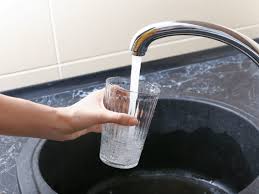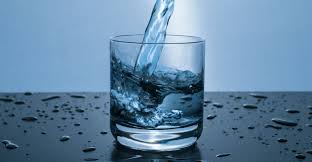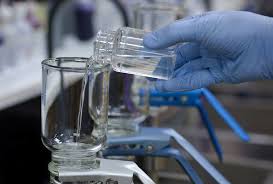Why should my well water get tested and for what contaminants?
There are many different reasons to get your well water
tested at a laboratory. People get their
wells tested when they are having water quality problems
(unusual color or odor), when they
are selling or buying a home, and when a new well is
installed or an old well or well pump is
maintained. In addition, it is good practice to have your
well water checked at least once a
year and even to reevaluate your drinking water source if
posed with health-related problems.
Local health departments are the main regulatory agency with
respect to residential wells. They
are required to maintain a list of environmental
contaminants within their jurisdiction, and they
consider this information when they issue permits for new
wells. Your local health department is
usually at the district or county level, and their phone
number can be found in a local telephone
book or online at www.malph.org. Since the local health
department tracks this contaminant
information, and contaminants are site-specifi c depending
on the contaminant source, it is
worthwhile to contact the local health department to
determine what contaminants may be
in your area. If a contaminant such as a petroleum product,
industrial solvent, heavy metal,
herbicide, or pesticide is in the area, the health
department may recommend a test for the
contaminant. When calling a local health department or
health district to discuss well water
quality, ask to speak with a water sanitarian.
When buying or selling a home, some testing may be required.
Some counties require that
wells be tested for certain contaminants upon the sale of a
home (called “point of sale”
testing). A test for bacteria or even an “automated partial
chemistry” test may be required. The
automated partial chemistry test is for the following
contaminants: chloride, fl uoride, hardness,
iron, nitrate, nitrite, sodium, and sulfate. In addition to
this point of sale testing, various lending
institutions require drinking water testing before mortgage
approval (e.g., the Federal Housing
Administration requires testing for lead in drinking water
sources before they will approve the
lending transaction), so contact both the lending
institution and the local health department to
make an informed contaminant test selection decision.

Water Sample Analysis
Water sample testing detects bacterial indicators of
contamination:
in drinking water and non-potable sources (i.e., sewage,
pools, spa, and recreational beaches)
for investigations linked to clinical illness
Public Health Inspectors can review requirements for testing
before submitting samples to PHO.
PHO Laboratory performs microbiological testing of water
samples for the detection of bacterial indicators of contamination and specific
pathogens in water. Each water sample is tested for specific indicators
according to the water source.
If testing is required on a water source that is not listed
in the PHO Laboratory water testing menu below, or testing is needed to
identify specific etiological agents in water related to a laboratory confirmed
clinical case or outbreak investigation, boards of health are asked to consult
with the microbiologist, or designate, overseeing the water testing program
prior to sample submission.
Sample collection requirements, sample handling, shipping
conditions, test information including testing frequency, turnaround times and
reporting limits are dependent on the specific water source. Samples will not
be processed if the requisition is not completely and accurately filled in when
received at the laboratory; and a new sample and completed form will be
required to be submitted.
- Drinking water (including bottled water)
- Drinking water – Private citizen
- Ice – Treated
- Public Beach Water
- Recreational Water Facilities, Public pools/Spas
- Suspected Sewage Contamination – Water

Health and Drinking Water
Is my tap water safe to drink?
Most community water systems get a passing grade from the
federal government, because drinking water regulations allow contaminants in
tap water at levels greater than what scientists deem to be safe. In addition,
there are many unregulated contaminants that end up in drinking water.
If you want or need better drinking water than what comes
from the tap, EWG suggests buying a home water filter certified to remove or
reduce the contaminants found in your tap water. EWG has developed an extensive
online guide to choosing a water filter, which will help you decide which one
is right for you.
Is bottled water safer than tap water?
In most situations, bottled water is not the answer. The
problem with bottled water is that you cannot be sure what you are getting.
Reports show that some bottled water is just tap water, filtered in some cases
and untreated in others. Unlike public water suppliers, bottled water
manufacturers are not required by law to disclose the levels of any
contaminants in their products.
In addition to water contaminants that could come from the
source water, bottled water may also be contaminated with plastic additives
that can migrate from plastic packaging. Many of these additives have not been
fully assessed for safety by the Food and Drug Administration, the agency with
oversight over food and beverage packaging.
Bottled water may be the appropriate choice in an emergency
– after major storms or earthquakes, or a large-scale infrastructure failure.
In cases such as these, choose bottled water that carries a disclosure about
its source and treatment, and the results of water quality testing.

How can I be clear to a laboratory that I want them to use only
USEPA-approved methods?
Laboratories may be certified by MassDEP in any one or more
of 132 parameters, analytes or categories. Since a laboratory might not be
certified in the tests required or recommended by your local Board of Health,
you should put in writing in your contract with the laboratory that it must
comply with the requirements of your town’s Board of Health. Check the
information on the second page of the list of certified laboratories to see if
MassDEP offers certification for the analytes you are concerned about.
If you want your water tested by a certified laboratory even
though you are not required to use a certified laboratory, make it clear to the
laboratory that you want the test done using USEPA approved methods and
according to MassDEP’s requirements for certified laboratories which are found
in Massachusetts regulations at 310 CMR 42.00.
Facts about your water
General water facts
- Canada’s water resources account for
approximately 7 per cent of the world’s renewable fresh water
- An estimated 884 million people around the world
live without access to safe water
- The human body is approximately 70 per cent
water and every system in our body uses water
- A human being can live only four to seven days
without water
Local water facts
- In the Region of Peel, tap water arrives at your
home, school or business within 3 to 6 days of being taken from Lake Ontario
- There are more than 4,000 kilometres of water
mains running beneath the ground in Peel
- There are more than 25,000 water hydrants in the
Region of Peel
- More than 300,000 homes and businesses receive
safe, clean drinking water from the Region of Peel